Intel Skylake Z170 Motherboards: A Quick Look at 55+ New Products
by Ian Cutress on August 5, 2015 7:59 AM ESTMSI Z170: Other Gaming Boards and Channel
MSI Z170A XPower Gaming Titanium Edition
Everyone remembers when MSI’s overclocking range of motherboards were yellow, right? Well how about if they turned a silvery gleam? Welcome to Skylake, because MSI has you covered.
The XPower Gaming Titanium Edition (XPGT for short) is one of those products trying to break new areas of aesthetics. Some will like it, some will not – as far as we can tell, the design itself has little effect on actual levels of performance, but this is an XPower part of the line-up, meaning it is MSI’s more overclocking (and extreme overclocking) focused model. As a result, and to go with the name, the power delivery uses many Titanium chokes, we get a potential 4-way CrossFire using CPU and PCH lanes, and the OC panel has changed a fair bit.
The OC Dashboard is designed to attach to the motherboard in the top right and give the OC buttons needed, such as power/reset, base frequency/multiplier adjustments, a full system reset, fast boot and a slow mode switch. For users that don’t need it, it should be able to be left off.
Along with the matching steel armor on the PCIe slots we get two M.2 slots which according to my schematics can both be used in PCIe 3.0 x4 mode at the same time, although each one will lose you two SATA ports. It seems slightly odd that these are all made dependent when Z170 has enough chipset lanes to go around, but this is what MSI has done.
USB 3.1 on the rear panel comes in the form of two Type-A ports from the ASMedia ASM1142 controller, while networking duties are form the Intel I219-V and audio is an enhanced Realtek ALC1150 solution.
Pricing for the XPGT is set for £240, or $310 in the US.
MSI Z170A Krait Gaming
The Krait line from MSI initially started as just a simple white on black theme, but then somehow developed a following, a snake head logo and now gets merged into MSI’s Gaming line like everything else. Typically the Krait name is reserved for a cheaper ATX motherboard that supports SLI, and here we have that without USB 3.1 and only two video outputs. There is an M.2 slot that runs in PCIe 3.0 x4 mode, as well as an Intel I219-V network controller and a Realtek ALC1150 audio codec.
Pricing for the Z170 Krait Gaming should come in at £125/$162.
MSI Z170A-G45 Gaming – image from TechPowerUp
The Z170A-G45 Gaming is actually a minor variant on the Gaming M5 with a slightly different arrangement for the voltage read points and a single USB 3.1-C rather than two USB 3.1-A ports. The G45 version also seems to have a VGA on the rear panel, but apart from that it looks pretty much the same from a design standpoint.
The M5 was set around $195, so I’d imagine this to be similar.
MSI Z170A-G43
We saw the Z170A-G43 at Computex, which (like the G45 seems) to be a slight variant from the Gaming M line. This time the G43 seems to align with the M3 with a slightly different SATA arrangement, a different aesthetic, and I’d imagine given the design it should be using either the Intel I219-V or the Realtek network ports. Similar to the previous board, the G45 also seems to be equipped with a VGA port but similar to the M3, this board does not seem to support SLI giving a single PCIe 3.0 x16 from the CPU and then a PCIe 3.0 x4 from the chipset.
MSI Z170A PC Mate
MSI’s PC Mate line is a little bit of an oddball here, not being given the Gaming name. That is because it sits more in that internet café style of system or bulk office ATX design. This means separate PS/2 connectors on the rear panel, the three most common VGA outputs, a single M.2 x4 slot, two USB 3.1-A ports on the rear (the ones on the right), a basic audio codec (looks like ALC892) and a Realtek network controller. The PC Mate motherboard, despite being in the Z170 level of motherboards, is more designed to make a non-overclocking CPU happy with a set of basic functionality to satisfy users who don’t actually own the PC they are working on.


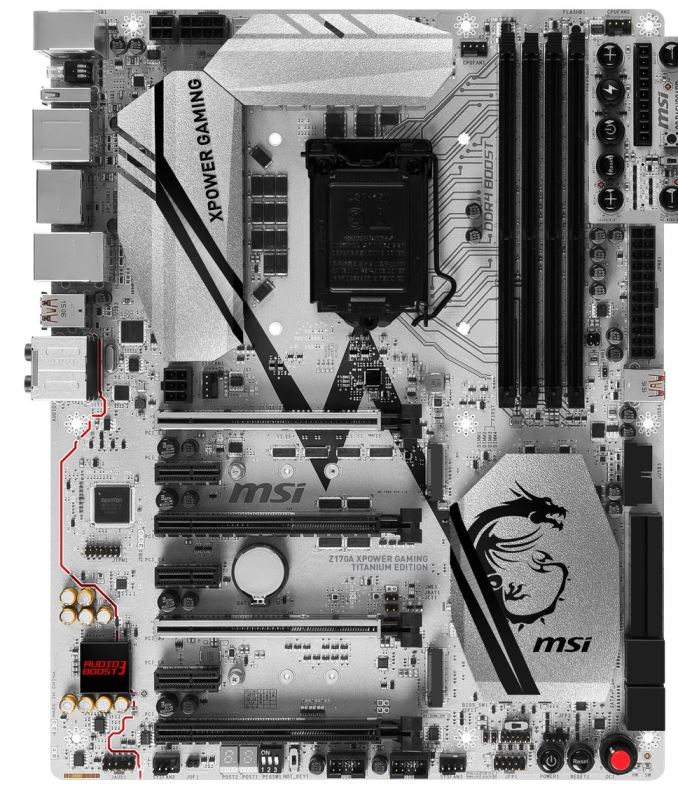

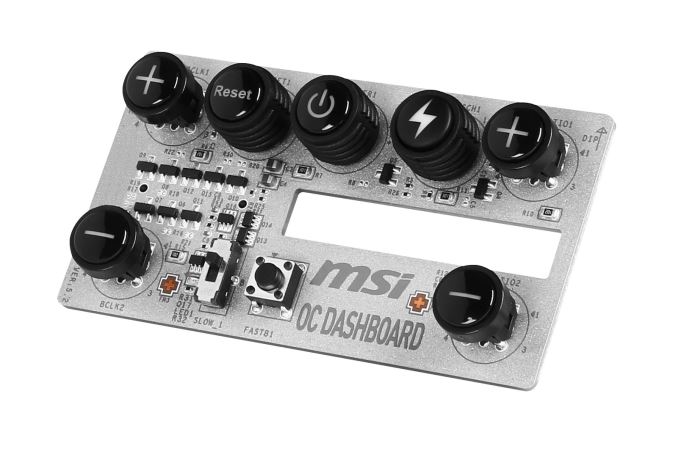






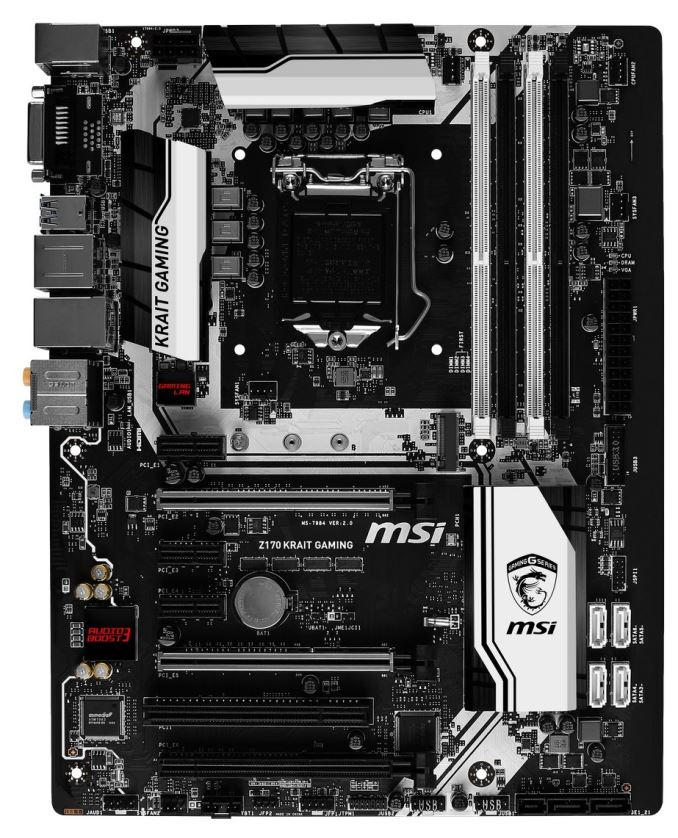







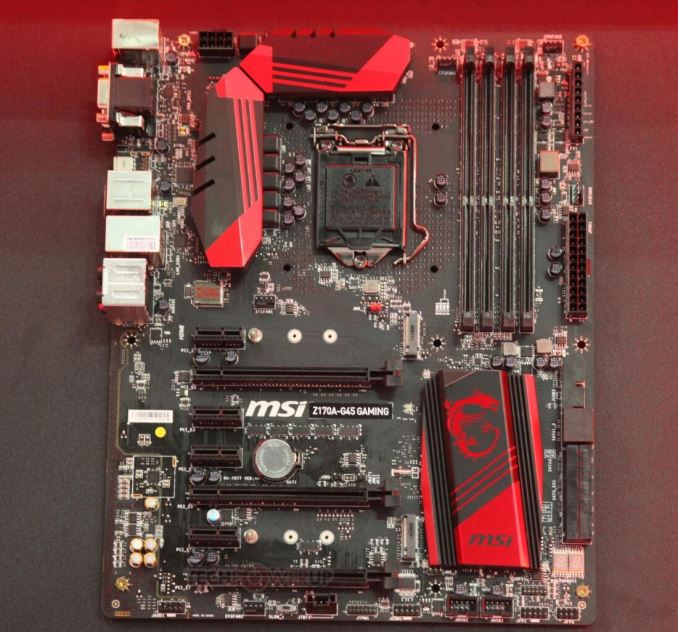
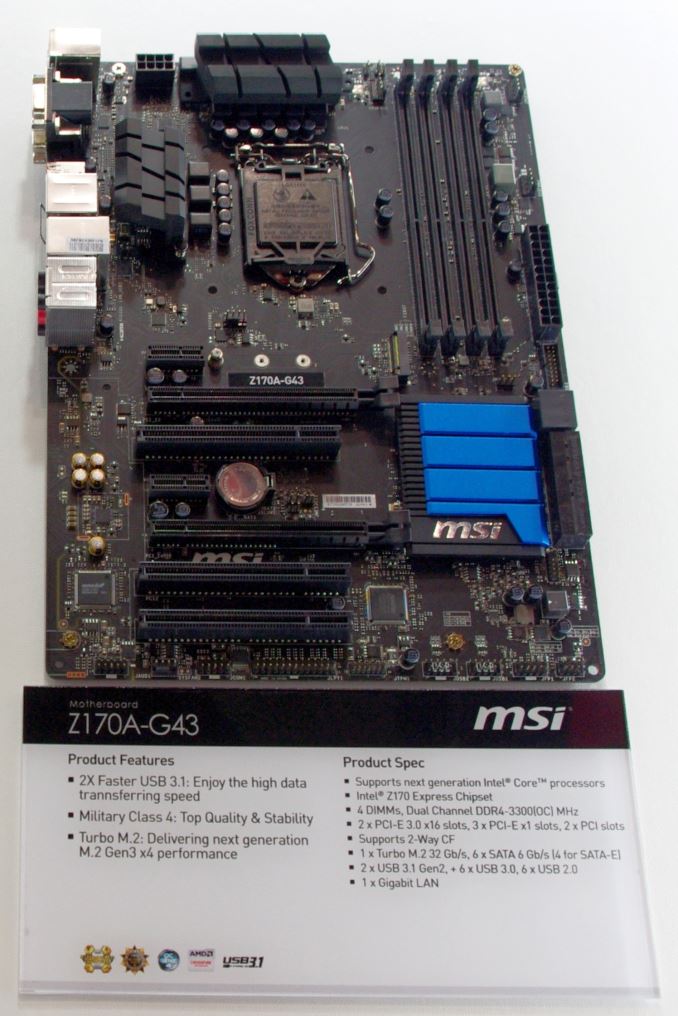
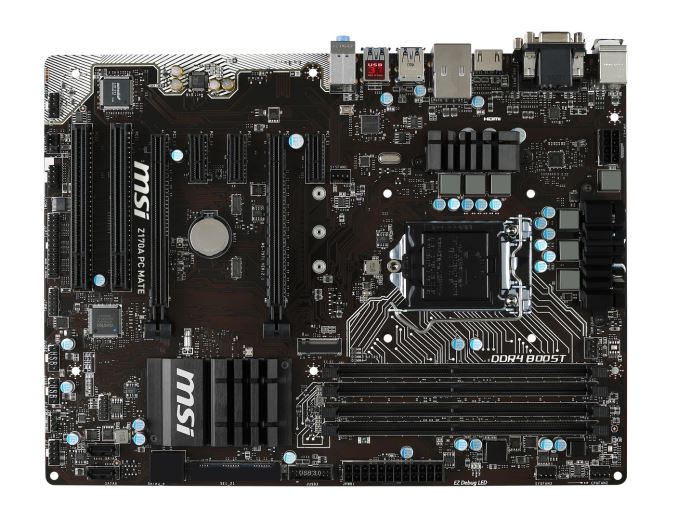














85 Comments
View All Comments
Oyster - Wednesday, August 5, 2015 - link
Ian, do you think it is possible to supply us with a tabular breakdown of all the motherboards? Not sure about others, but going through page-by-page is a bit overwhelming, and confusing at the very least. Good coverage as usual!Eidigean - Wednesday, August 5, 2015 - link
I second this. looking for number of M.2 slots, PCIe slots, USB 3.1 ports w/ type of controller (Alpine or otherwise). I'm shocked so few support 3 M.2 slots.MrBowmore - Wednesday, August 5, 2015 - link
Why not just use the pcie? Is there anything better than a intel 750 and demands M.2? I dont get the need for M.2.Eidigean - Wednesday, August 5, 2015 - link
Well, the SM951 is quite interesting. Also, if the M.2 slots are used, the PCIe slots can be used for 4 GPUs, NICs, or RAID cards. The ASUS workstation board in this article is interesting.Gadgety - Wednesday, August 5, 2015 - link
Tabular would be great.The_Assimilator - Wednesday, August 5, 2015 - link
Z170X-UD5 and Z170X-UD3 galleries are swapped.I'm glad to see that Gigabyte is exposing 2x USB 3.0 internal headers on almost all their boards - USB 2.0 needs to die. Now if only they would replace the dual USB 2.0 headers with an additional 3.0, giving 3x USB 3.0 headers, then I would be ecstatic. My Z77X-UD5H is still the only decently-priced motherboard around with a trio of USB 3.0 headers, and it's not getting any newer!
Regardless, I'm probably going to skip Skylake, for the simple reason that I'm not interested in buying a board equipped with the useless SATA Express. By the time Cannonlake rolls around, M.2/NGFF should have killed SATAe and there will be even more USB 3.0 ports from the chipset.
DanNeely - Wednesday, August 5, 2015 - link
I bought a GB board for a 4790k earlier this year for the dual headers. At least in the medium term though, I think they do need to keep 1 or 2 2.0 headers around. Not everyone buys a new case for their new builds, and older cases have built in 2.0 ports on the front/top panel. The same thing for front panel SD card readers; there are USB 3.0 versions out now, but the SD reader won't benefit from the faster connection so why spend money to replace it. I can't remember who makes it, but there's one OEM who sells some PSUs with an internal USB2 header for monitoring purposes.Beyond all of that, the chipset itself provides 14USB ports only 10 of which can be 3; so the mobo makers have 2 "free" headers to do something with. Dell/HP/etc will ignore them; but in the box ticking consumer market they're going to get used either for internal headers or a pairs of ports in the back. Anyone clinging to w7 who doesn't have PS2 peripherals in the closet will need those since 7 doesn't have a USB3 class driver; and at least in my case refused to talk to a 2.0 device in a 3.0 port until I got drivers installed.
Impulses - Thursday, August 6, 2015 - link
If you're using an SD reader for a modern camera with modern SD cards then it'll absolutely benefit from USB 3.0... Last 128GB SD I bought for like $58 can read at 150MB/s (or about 3x USB 2.0 speeds), Lexar UHS-II card. Most recent mirrorless bodies can take advantage of it too...8steve8 - Wednesday, August 5, 2015 - link
when will these actually be for sale?Ian Cutress - Wednesday, August 5, 2015 - link
Depends on the motherboard and what region you are in, but some are listed already: http://www.amazon.com/s/ref=nb_sb_noss?url=search-...